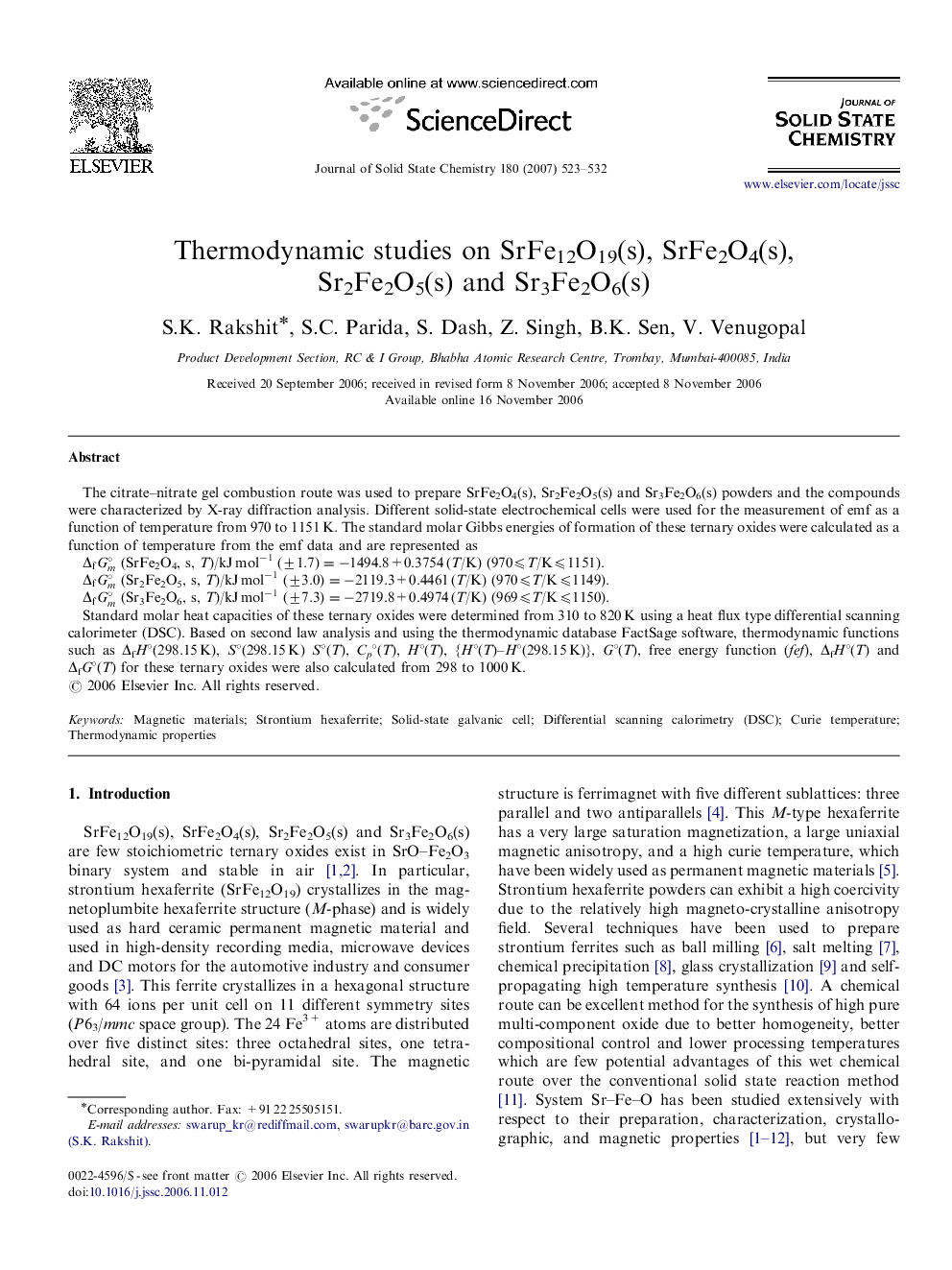| Article ID | Journal | Published Year | Pages | File Type |
|---|---|---|---|---|
| 1333415 | Journal of Solid State Chemistry | 2007 | 10 Pages |
The citrate–nitrate gel combustion route was used to prepare SrFe2O4(s), Sr2Fe2O5(s) and Sr3Fe2O6(s) powders and the compounds were characterized by X-ray diffraction analysis. Different solid-state electrochemical cells were used for the measurement of emf as a function of temperature from 970 to 1151 K. The standard molar Gibbs energies of formation of these ternary oxides were calculated as a function of temperature from the emf data and are represented asΔfGm∘ (SrFe2O4, s, T)/kJ mol−1 (±1.7)=−1494.8+0.3754 (T/K) (970⩽T/K⩽1151).ΔfGm∘ (Sr2Fe2O5, s, T)/kJ mol−1 (±3.0)=−2119.3+0.4461 (T/K) (970⩽T/K⩽1149).ΔfGm∘ (Sr3Fe2O6, s, T)/kJ mol−1 (±7.3)=−2719.8+0.4974 (T/K) (969⩽T/K⩽1150).Standard molar heat capacities of these ternary oxides were determined from 310 to 820 K using a heat flux type differential scanning calorimeter (DSC). Based on second law analysis and using the thermodynamic database FactSage software, thermodynamic functions such as ΔfH°(298.15 K), S°(298.15 K) S°(T), Cp°(T), H°(T), {H°(T)–H°(298.15 K)}, G°(T), free energy function (fef), ΔfH°(T) and ΔfG°(T) for these ternary oxides were also calculated from 298 to 1000 K.
Graphical abstractGibbs energy of mixing of ternary oxides of the system Sr–Fe–O.Figure optionsDownload full-size imageDownload as PowerPoint slide
